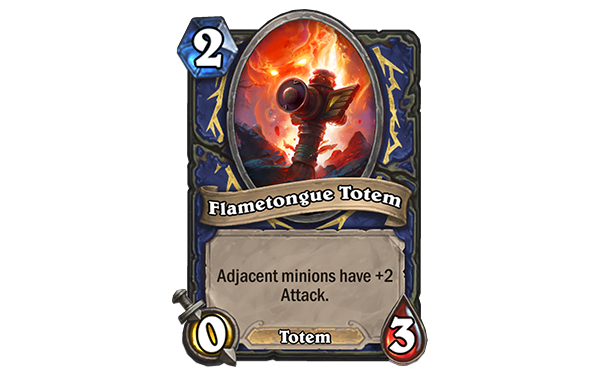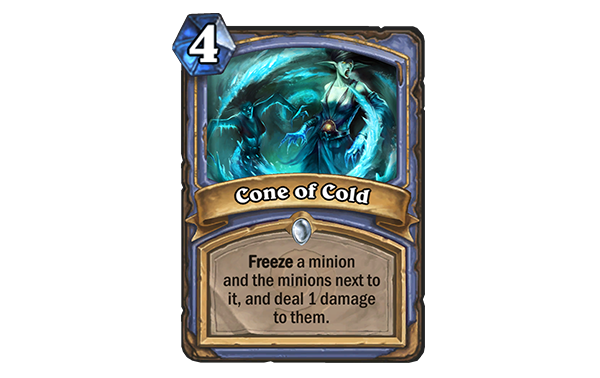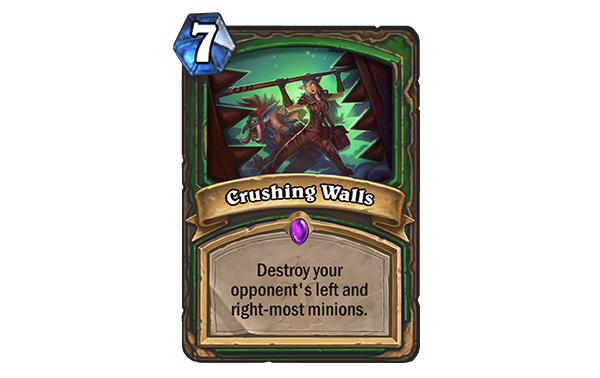Hearthstone - Heroes of Warcraft news » What Sets the Pros Apart: Board Positioning
In this chapter of our What Sets the Pros Apart series, we look at the art of positioning in Hearthstone—how the placement of your minions on the board can be optimized for the most impactful plays. (For newer players, if you’re not already thinking about precisely where you play your minions, you should be!)

Positioning is a skill that is comprised of two considerations: What plays can I make that take advantage of how my minions are laid out, and what plays can my opponent make that can affect this?
Classic examples of cards that require positional play include Flametongue Totem and Cone of Cold.


When you are setting up a board for Flametongue Totem, you generally want to ensure that both adjacent minions can act on the turn that you play it, maximizing its immediate value. Playing it next to a minion with Taunt is valuable, as well, to improve your minion trades. You can even attack with minions adjacent to the Totem, then play Charge minions next to it for even more potential damage!
Conversely, Cone of Cold can punish poor minion placement. If you have four minions on the board, but your three highest Attack-value minions are all next to each other, Cone of Cold can lock them all down. If you have more than three minions on the board, the Mage is forced to choose which three Cone of Cold hits—so you can keep them from hitting an optimal Freeze.
There are a variety of potential board-placement decisions players should make. A few of the factors that affect these decisions are:
- Summons: Any spell cards or effects that “summon” a minion, rather than you playing it directly, will place the new minion on the far right-hand side of the board. Examples include the Shaman Hero Power or a spell like Animal Companion.
- Minion summons: Minions that summon an additional minion—whether with Battlecry effects, like Faceless Summoner, or at the end of your turn, like Primalfin Totem—summon the additional minion to the right of wherever the original minion was played. Some minions, such as Sindragosa or Grim Necromancer, summon multiple minions—in which case they will fill up adjacent spaces.
- Deathrattles: When a minion’s Deathrattle effect summons one or more minions, those minions will be summoned in the position of the original minion. If you have Cairne Bloodhoof on the board between two Murloc Tinyfins, Baine Bloodhoof will appear between the two adorable murlocs when Cairne dies.
- Spell effects: Plenty of spells other than Cone of Cold can take advantage of poor minion placement. Meteor is another great recent example.
- “Also damages” cards: If you’ve ever played Scourgelord Garrosh, you’ve seen this effect on Shadowmourne—and likely been able to identify efficient ways to clear your opponent’s minions while taking less damage with careful target choice. (This effect also exists on the Wild cards Magnataur Alpha and Foe Reaper 4000!)
- Adjacent effects: Like the Flametongue Totem example given earlier, some cards apply effects to minions adjacent to them. There are also minions whose Battlecry effects are applied to adjacent minions, like the popular Defender of Argus.
Many players navigate the positional choices on their side of the game—optimizing for the most damage they can deal with a Flametongue Totem, or putting a Defender of Argus between two big minions on their own board—but the next-level challenge is thinking about potential outs your opponent might have that could punish your positioning.
Can you set up your board so that it isn’t vulnerable to Cone of Cold? Could they clear it with Meteor? When taking your turn, are you minimizing the risk of them getting optimal value against you from their Flametongue Totem?
There are additional positional possibilities coming soon in Kobolds & Catacombs, like the all-new Crushing Walls in Hunter!

Knowing that option exists and positioning accordingly will be the mark of a strong player when the new expansion’s cards become available.

That’s it for the first installment of What Sets the Pros Apart! We’ve got several more coming, including some of your favorite pro players weighing in on how they use these skills.
Have you got any great positional tips or tricks for other players? Ever had a miraculous moment due to great positioning? Share it with us in the comments!
















 Update comments
Update comments